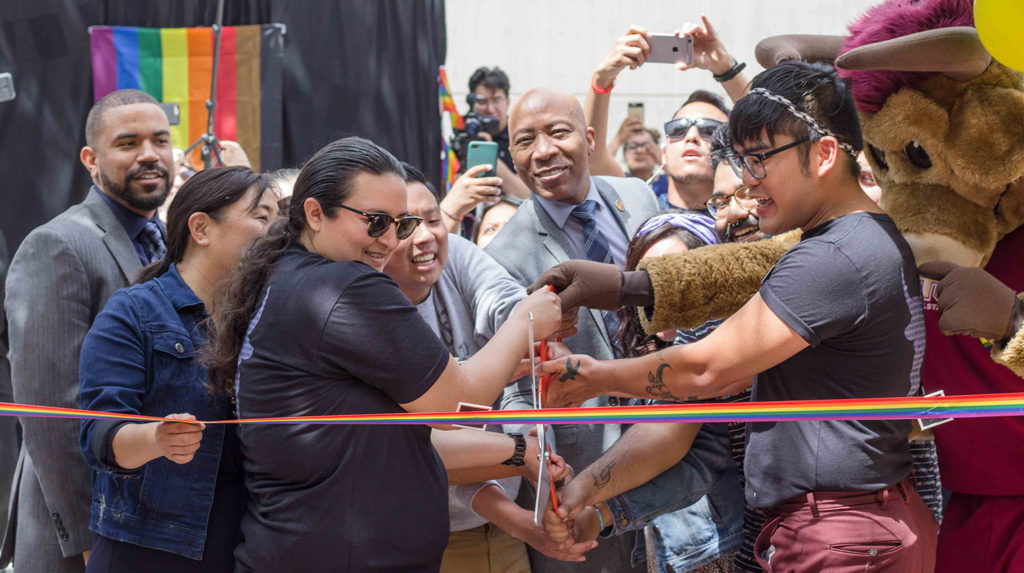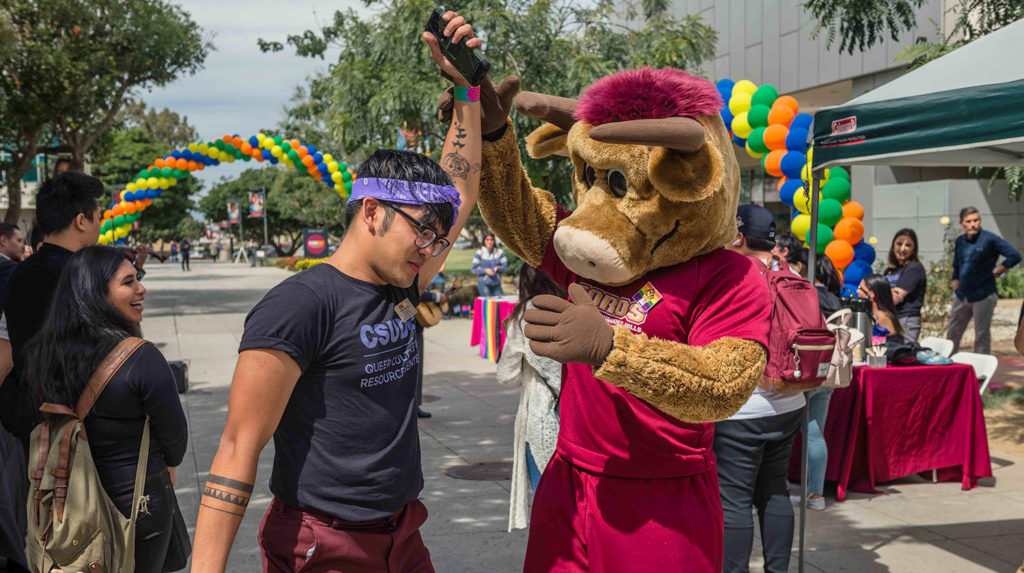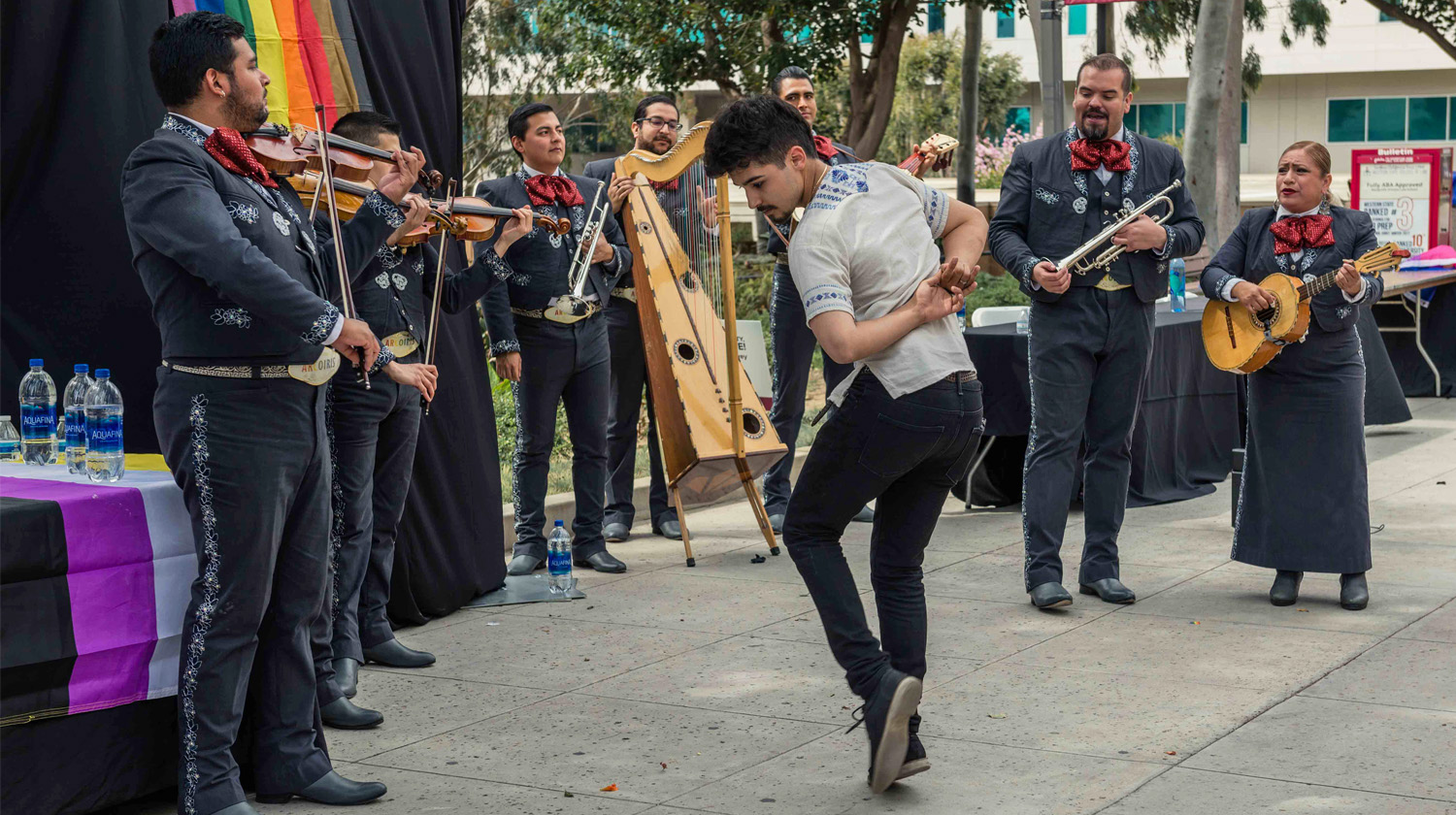
With the drop of a rainbow-colored ribbon and applause from a lively crowd of supporters, California State University, Dominguez Hills (CSUDH) officially opened the Queer Culture and Resource Center (QCRC) on April 11.
Located off the West Walkway next to the DH Sports Lounge’s busy patio, the resource center has already begun to fulfill one of its primary goals: to provide a visible and welcoming space for students who historically have not been well recognized on university campuses. Just as critical is the center’s objective of building cultural awareness about the needs of LGBTQIA people at CSUDH.

Several students and administrators offered words of support for the QCRC during its grand opening, including Yuta Nakamura, a psychology major at CSUDH.
“I am very excited and honored to be here and speak at the grand opening of the Queer Culture and Resource Center. I am here because I want to stay true to who I am,” said Nakamura, who mentioned the struggles he had with his family’s lack of support when he came out. “As soon as I got here I started to feel freer–to feel more validated.”
During his remarks, William Franklin, vice president for Student Affairs at CSUDH, shared his vision for more student support centers on campus, such as Latinx and Asian Pacific Islander centers. He also applauded the success of the Rose Black Resource Center and the Toro Dreamer Success Center.
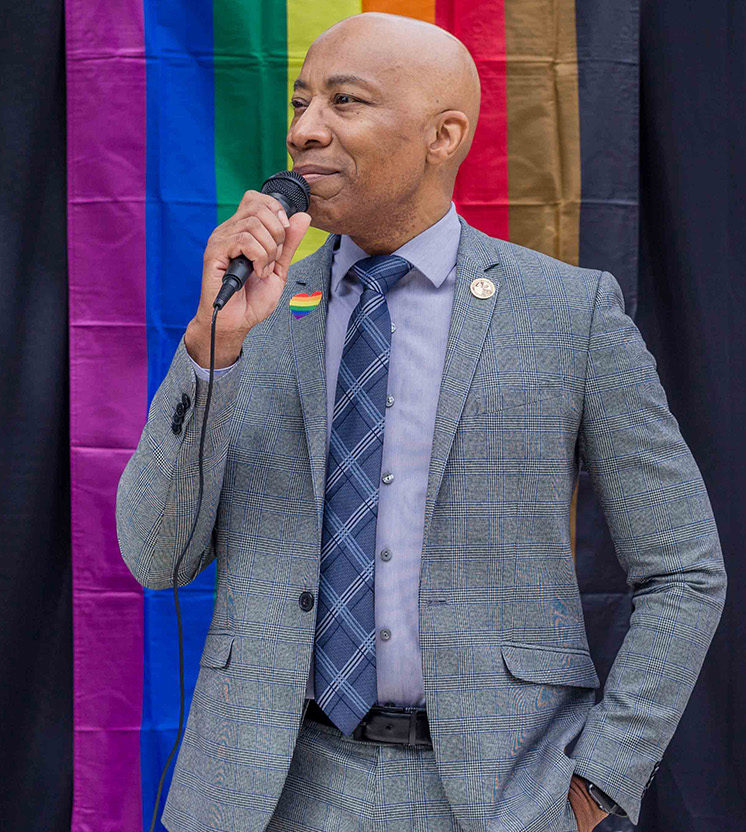
“Why do we need all these centers? Because a campus can be diverse while folks still don’t feel included, don’t feel heard, don’t feel seen, and don’t feel made aware of,” said Franklin, who acknowledged Susan Borrego, former vice president of Student Affairs at CSUDH, as an early visionary of the resource center. “That’s what I love about diversity and inclusion. You need to accept people exactly where they are in their development.”
Today, college campuses are offering more LGBTQIA programs and support than ever before, but the numbers are still low.
Approximately 100 LGBTQIA centers exist on college campuses across the nation. The College Equality Index reports that only 38 colleges currently offer gender-neutral housing options for LGBTQIA students, and that only 14 percent of colleges are considered to be “trans-friendly.” A National Gay and Lesbian Task Force study found that 29 percent of students did not feel that their curriculum adequately represents contributions of LGBTQIA individuals. The task force also found that only 31 percent of college students feel that their college’s administration thoroughly addresses LGBTQIA issues on campus.
The QCRC grand opening festivities continued throughout the day. They included a resource fair, the sounds of Mariachi Arcoiris de Los Angeles, appropriately playing the traditional music of Mexico that signifies important events in people’s lives, a Undocuqueer version of Loteria–a traditional game of chance similar to Bingo–and tours of the History of the LGBTQ+ Civil Rights Movement exhibit currently on display in the Library Arts Gallery.
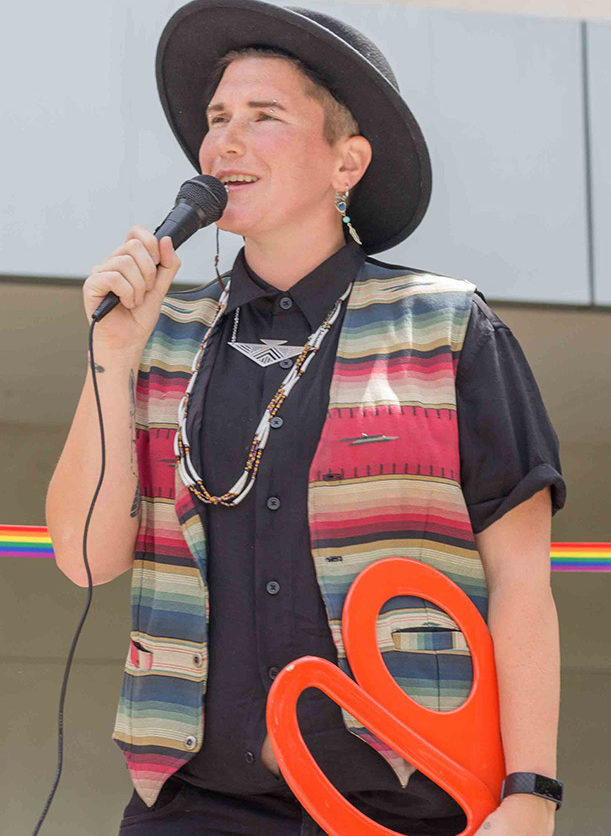
Meet the QCRC Coordinator Karama Blackhorn
Karama Blackhorn, coordinator of the QCRC, arrived at CSUDH in August 2018, and for the last nine months they have been working to secure the center’s space, develop its programming, and create strong partnerships across campus.
At the grand opening, Blackhorn began her welcome remarks with “We are coming out today.” In an earlier interview they said it would be a “significant day on campus” when the ribbon is cut–that “it’s been a long time coming.”
“There are faculty who have been here for 20 years organizing spaces for transgender and queer students, staff, and faculty,” said Blackhorn. “I’ve heard that there have been a lot of pushes and stops, but not a lot of movement or recognition for what this should look like to sustain it.”
Blackhorn added that this time it was student activism and the university’s more openness to affinity spaces that drove support for the new center. “A master’s student wrote a thesis about the climate on campus for queer students of color. That really helped push the concept that we needed more space, and helped spawn conversation about the climate on campus.”
Much of Blackhorn’s 13-year career in education has focused on multicultural affairs. They have served students at the University of Washington, Seattle University, and at Evergreen State College in Olympia, Washington. Blackhorn earned a bachelor’s degree in critical race and gender studies and a Master in Public Administration in Tribal Governance from The Evergreen State College.
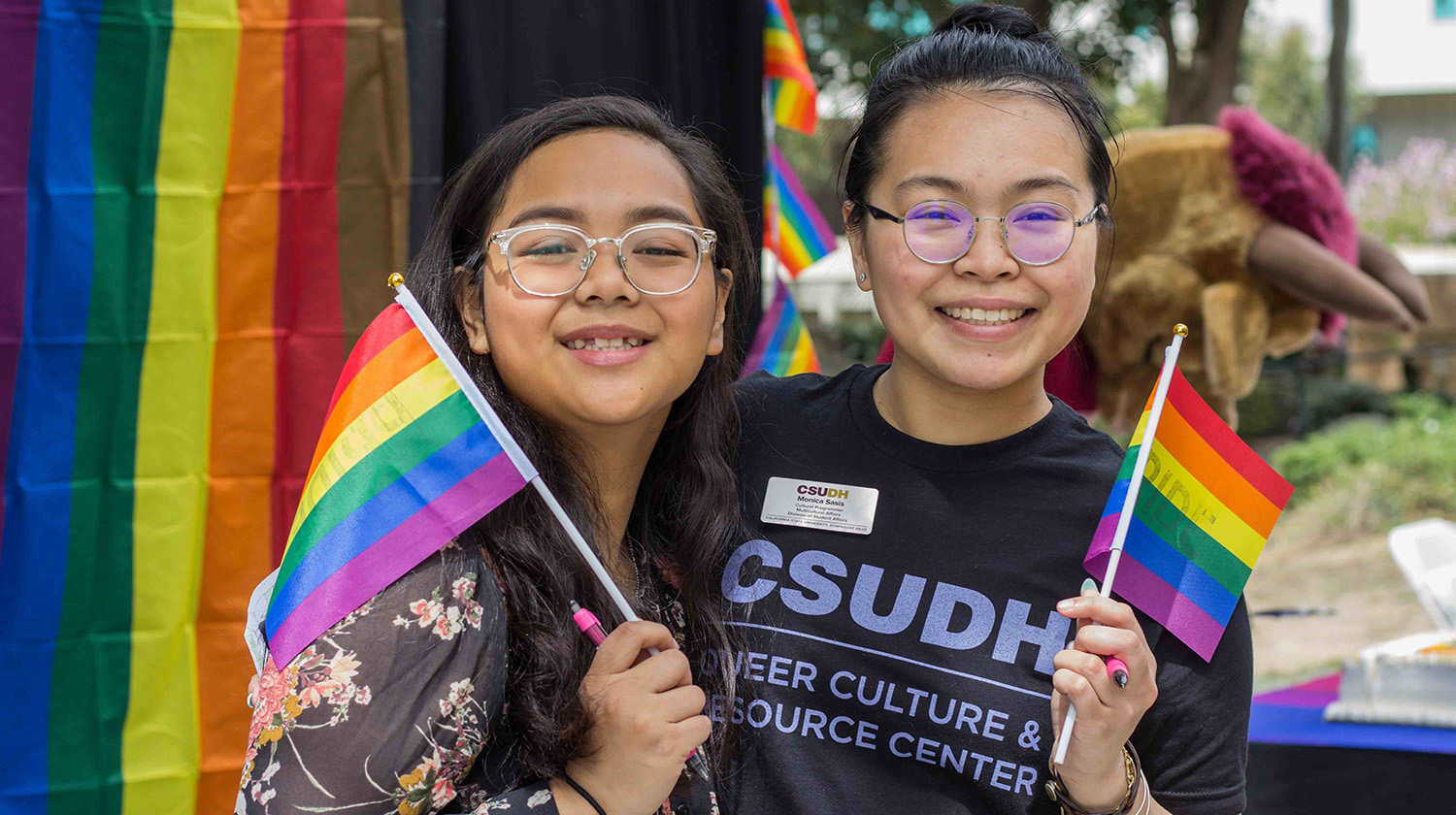
Beyond creating awareness and supporting CSUDH’s LGBTQIA community, the resource center is a place for people to mingle. “Our LGBTQIA community really needs to have access to positive relationships,” said Blackhorn. “It’s hard to meet people when you’re not trying to date or you don’t go to clubs. Positive spaces like the center are so important to build community; it is open for everyone.”
With the center open, Blackhorn will shift much of her focus to building the capacity of the queer community to support each other and working with groups across campus to plan programs and events that help the LGBTQIA community become better engaged and understood. Current plans are to create a series of events around National Coming Out Day on Oct. 11, queer parent groups, a mentorship program, and a yearlong campus wide training series
Many of the QCRC’s events next year will focus on the intersections and connections in diverse communities, according to Blackhorn. “I could see the Rose Black Resource Center hosting a queer black mixer, working with the American Indian Institute, Latinx groups and Asian Pacific Studies,” they said. “Most of what we do will depend on what students ask for, but if we could all at least connect on expanding our understandings of gender and sexuality, that would be great, because we are all family in a struggle to learn to know and love ourselves and each other more.”
